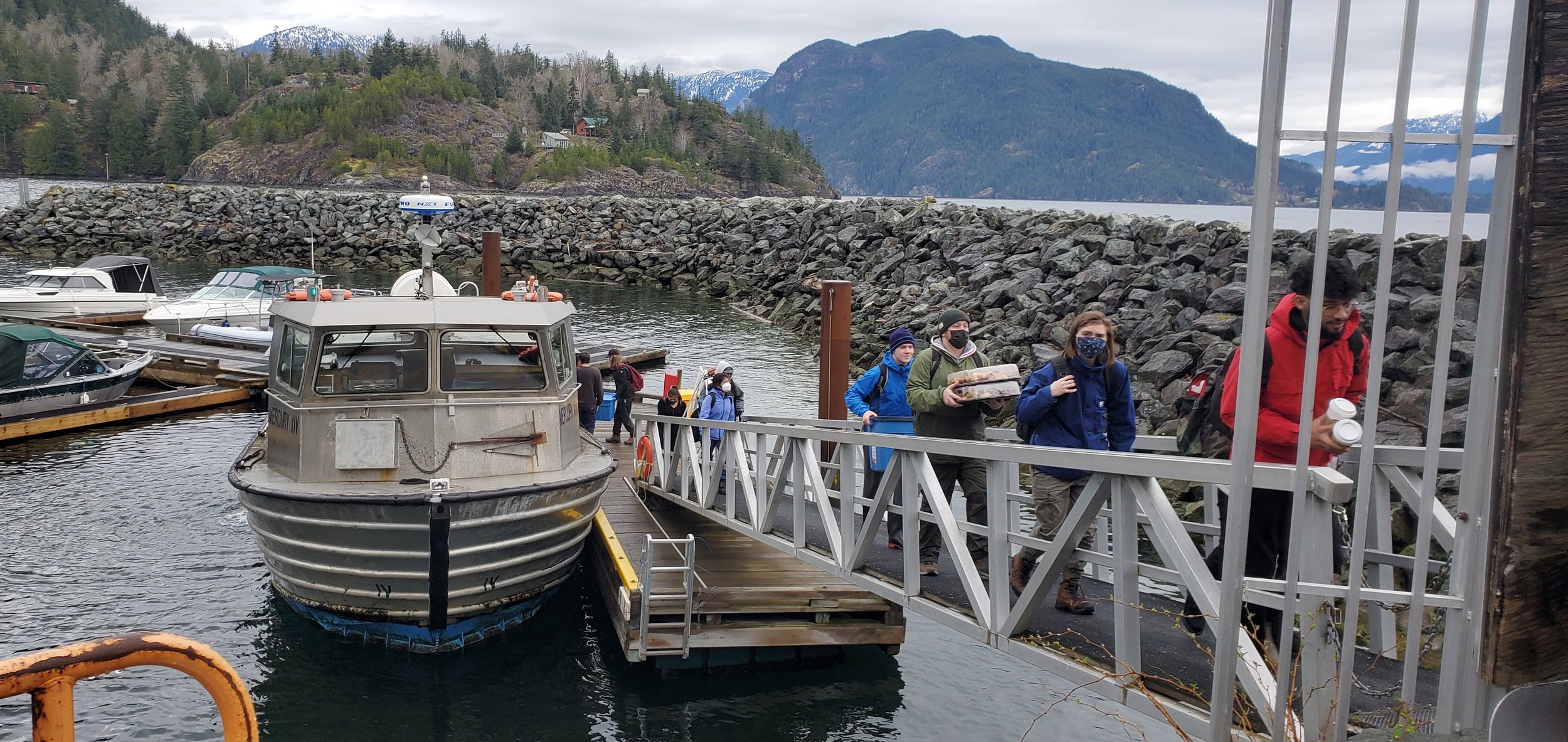
Partnering with Capilano University
Connecting Youth to Nature Through Place-Based Projects
We partner with Capilano University (CapU) to explore opportunities that align with HSBRIS’ mission of connecting more youth to nature and to build capacity toward our objectives, as well as CapU’s Envisioning 2030 and Illuminating 2030.
Our partnership with CapU began in early 2019 with the formation of a working group committee to explore collaborative opportunities. This evolved into a Memorandum of Understanding between our two organizations.
On September 22, 2021, Capilano University (CapU) launched Skw'cháys (pronounced skwa chaýs), the University’s legacy canoe. The launch honoured the designation of the UNESCO Átl'ka7tsem/Howe Sound Biosphere Region, Canada’s 19th UNESCO Biosphere Region. Read more here.
In June, 2023, the lead of the Howe Sound Biosphere Region Initiative, Ruth Simons, was awarded the highest form of recognition granted by Capilano University through an honorary degree. This is given to acknowledge persons who are distinguished by their significant contributions and accomplishments and whose excellence will, through their association with Capilano University, bring honour to their name.
Though we had worked with CapU’s North Vancouver campus since 2019, we were excited about the opening of Capilano University’s Squamish Campus in fall 2024, located at the former Quest University, which was built in 2010. This is stunning location and designed buildings will serve the Squamish community.
Together, the working group has created opportunities for faculty and students to work on projects that deepen their connection to the region and connect the youth to nature, real, local issues and community partners.
Read more about the projects below, view our special CapU Newsletter, subscribe to our newsletters and contact us if you have ideas and opportunities for future projects.
Donors can support these student and faculty-led projects through donations to the Capilano University Foundation Cap. U/Howe Sound Biosphere Fund. Donations will directly support the purchase of equipment, field trips and teaching resources that benefit future generations of learners and the future of Howe Sound. Learn more here.
Leave a lasting impact. Your gift supports stewardship, education, and ecological resilience for years/generations to come.
It’s a powerful way to protect the place you love - now and forever.











